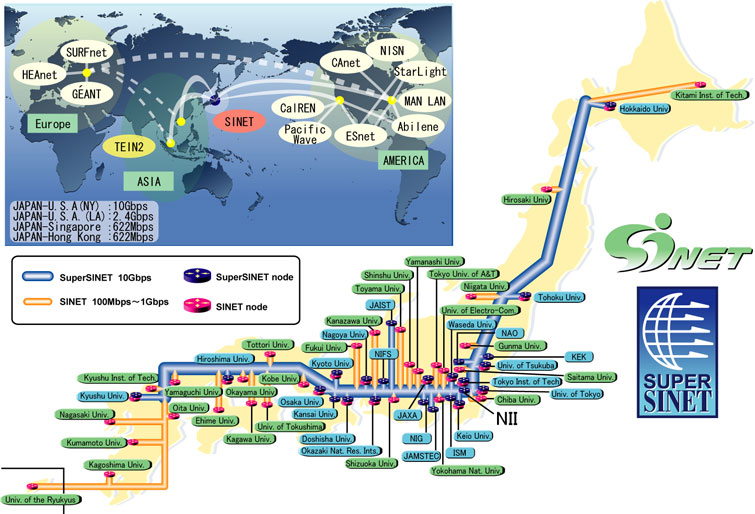NII started its network operations in 1987 as a major service for universities and research institutions throughout Japan. At first, it employed a X.25 packet switching network for connecting computer centers in universities. In 1992, when an important issue was the improvement of campus information environments, it adopted Internet Protocols for interconnecting campus networks. Since then, this academic Internet backbone, called the Science Information Network (SINET)1, has been expanded in an effort to promote research and education and to disseminate scholarly information for universities and research institutions. As shown in Fig. 1, 44 network nodes are currently deployed at major universities and research institutions. The lines from other institutions are collected at routers on the nodes. In 2005, 722 institutions were using SINET as an indispensable infrastructure for their daily activities. All of the nodes are connected with 1-Gbps or faster optical networks and the backbone speed is 10-Gbps.
SINET operates overseas connections as well. The 10-Gbps line to Abilene in the U.S. is the most heavily used Internet connection to Western countries, and GEANT in Europe is connected through this circuit. SINET also has a 2.4-Gbps line to Los Angeles in the U.S.
In January 2006, SINET launched SINET/Asia operations by deploying 622-Mbps international lines to Singapore and Hong Kong. These lines are used as Internet connections among Asian countries and Australia. The cooperation of the TEIN2 project initiated by the European Union has also meant that SINET will eventually have another path to Europe through this south-bound internetworking.

In 2002, NII launched the Super SINET initiative to provide a cutting-edge network infrastructure for research projects involving large amounts of data and supercomputers. Super SINET provides a 10-Gbps network environment and high-speed routers at selected nodes to meet the enormous bandwidth requirements of high-speed network-dependent research on high-energy physics, nuclear fusion science, space and astronomical science, genome analysis, and nanotechnology research. It is interconnected with SINET, and both networks are being operated in a multi-tier manner. Super SINET is also employed for the grid initiative called NAREGI (National Research Grid Initiative).






